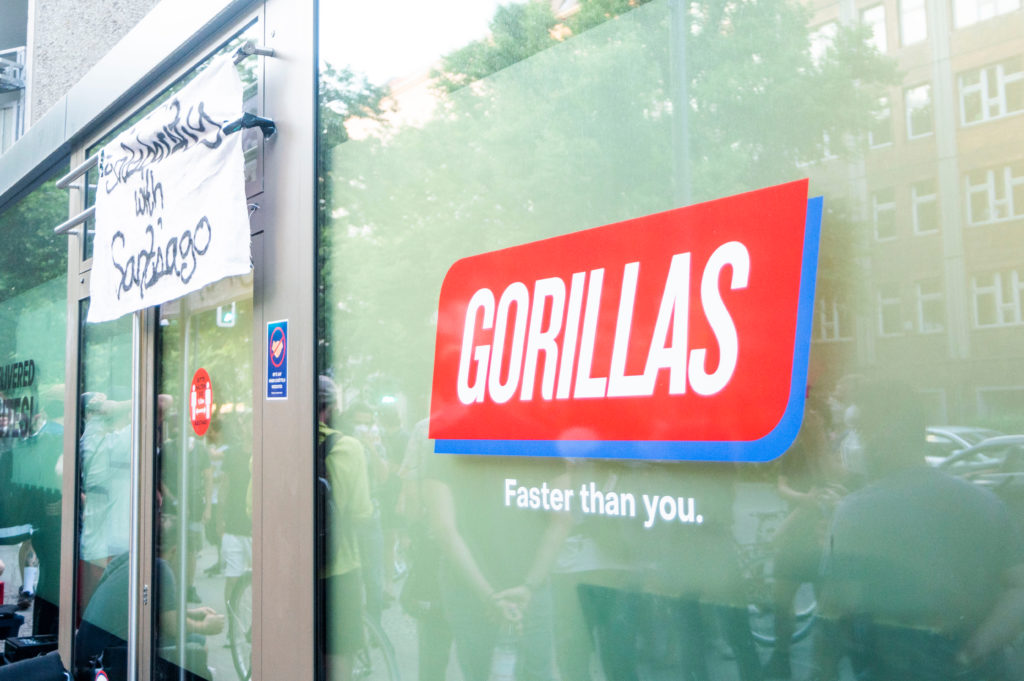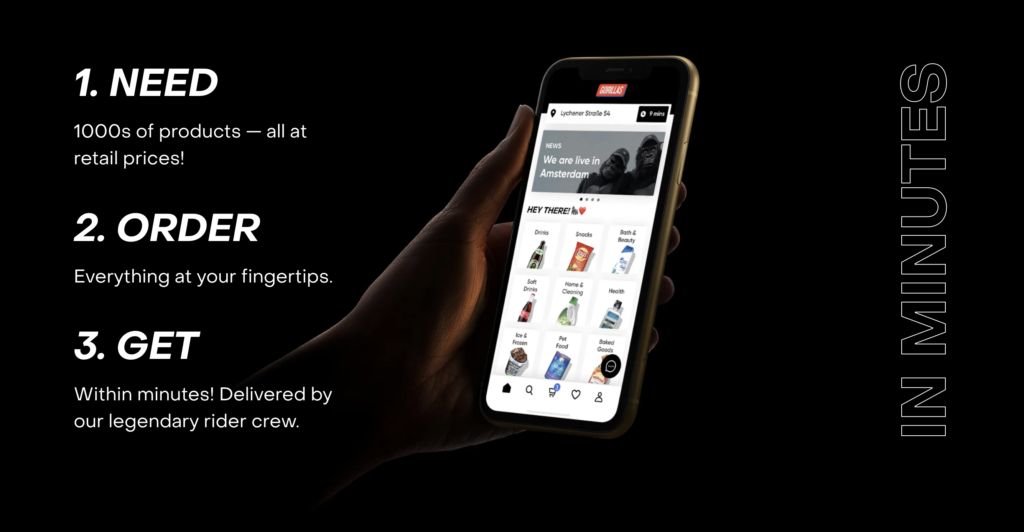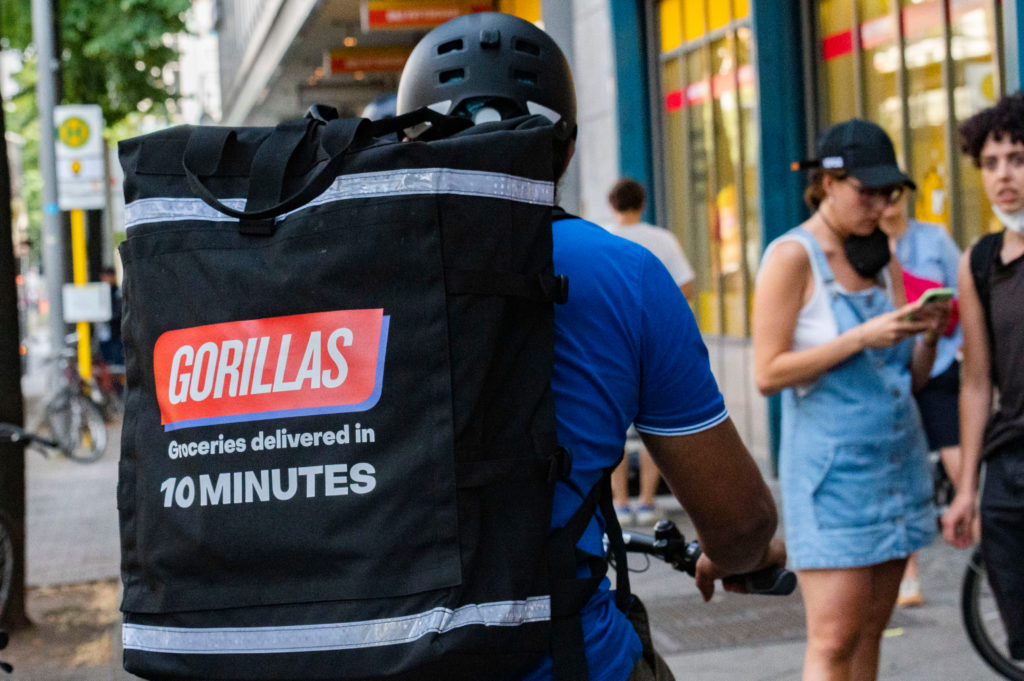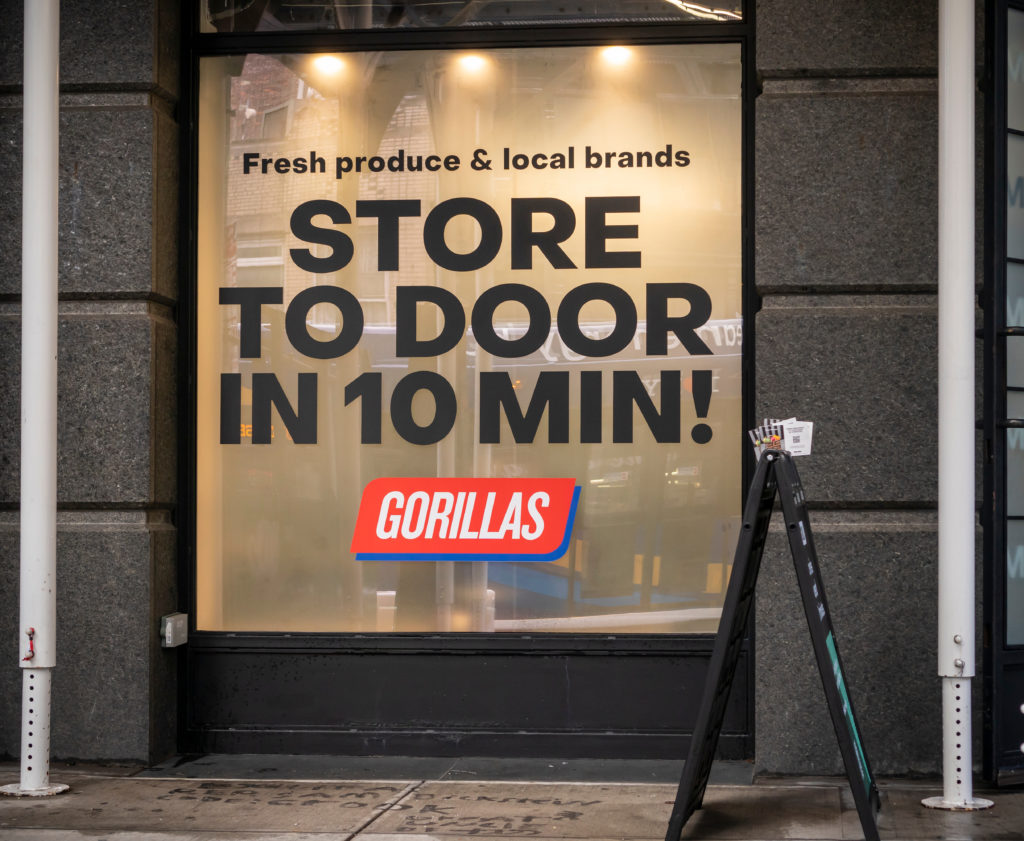
- Products
- Solutions
- Learn
- Partner
- Try Now
Gorillas is a German online grocery delivery business. The Gorillas business model offers its customers an option to select and order their required groceries from the store and get them delivered to their doorstep in 10 minutes.
Leading the way through with its own hyperlocal fulfillment centers, Gorillas, has already established itself as a strong presence in Berlin, has acquired capital of $44 million.
In this article, let’s discuss the business model of one of the leading companies in the post-pandemic faster grocery delivery, Gorillas.

What is Gorillas?
Gorillas is a food and grocery delivery service that operates in Germany, France, the Netherlands, and the United Kingdom.
Gorillas business model provides customers with access to a wide selection of things, such as groceries and alcohol, and charges them a fee for sales and delivery.
It’s simple to use. To utilize the service and place an order with Gorillas, you must first register online or download the Gorillas app, which is available for both Android and iOS.
Enter your location and payment information, and you’re good to go. Choose from thousands of goods to order and have delivered to your door.
For example, delivery services such as Instacart collaborate with other shops (such as supermarkets) to distribute their items. However, because the delivery driver must search hundreds of shelves for all necessary goods, this process frequently takes longer.
Furthermore, Gorillas offers its riders Gorillas-branded gear as well as electric bikes. Rather than contracting riders, the firm employs a huge number of them.
Want to learn more about electric bike rental business solutions? Click here.
Gorillas: The history
Gorillas is an online grocery delivery service based in Germany.
Kaan Sümer and Jörg Kattner founded it in 2020 to target an underserved segment of the supermarket sector. Sümer discovered that customers planned their food buying around the supermarket’s supply chain needs, rather than the store organizing around the consumer’s purchasing needs.
As a result, most people buy groceries in quantity on a weekly basis. This trend has resulted in a focus on long-life shelf items, with even fresh food being designed to survive as long as possible. Consumers who choose to make smaller but more frequent purchases are likewise harmed by shopping patterns based on supply chain demands. Furthermore, the approach is problematic for those who forget to buy one or two ingredients for a dish.
To address this issue, Sümer and Kattner considered how a consumer could react to a corporation providing them with what they needed when they needed it. Finally, they projected that customers would migrate from weekly to ad hoc grocery shopping.
Sümer purchased supplies from a nearby grocery and kept them in his home with a tiny amount of seed capital. When an order was received, he delivered it on his bicycle throughout the area to guarantee that consumers did not have to wait. Following its initial success, the program was expanded to a 165,000-person district in Berlin. Rapid delivery and late-night hours promoted word-of-mouth advertising.
The service is currently accessible in all major German cities and is expanding into other parts of Europe. Gorillas became the quickest German start-up to attain unicorn status, with a valuation of more than $1 billion, in March 2021.

How does Gorillas work?
Like the majority of businesses of this sort, it is tied to a smartphone app. It must be acknowledged that native phone capabilities, such as the ability to call at any time and, most importantly, geolocation, go hand in hand with this sort of business model.
The program itself is nothing spectacular; in fact, it is rather simple. We enter our address – or let it geolocate us automatically – and it informs us of the approximate delivery time.
Then, a gridded pane with the various categories appears (fruits and vegetables, organic products, beverages, cleaning, babies, pets…). The part on local producers stands out, contributing to the notion of proximity commerce.
Then you add the items to your shopping basket, make your payment, and in approximately 10 minutes you have your order at home. That’s all there is to it; no more complications.
How does Gorillas make money?
Gorillas business model generates revenue by selling their products at a profit and charging delivery costs. In the next part, we’ll take a deeper look at each of the two.
From product sales
The items offered on Gorillas are acquired and stored by the company. That is, it does not deliver items from a supermarket (or other retail partners).
As a result, anytime Gorillas sells a product, it profits. The profit is the difference between the sales price and any related expenditures, such as acquiring and storing the goods.
Both venture capitalists and industry professionals agree that this strategy is significantly more profitable. First and foremost, Gorillas understands where and how much stock it has of each product. Apps that collaborate with other shops frequently do not receive real-time information about a product’s availability, resulting in orders that are not totally fulfilled.
This strategy has the drawback of necessitating an initial investment in order to create warehouses and purchase in bulk.
Because Gorillas drivers are typically full-time employees, the company’s driver fleet must be ready at all times.
Platforms that hire drivers on a contractual basis are unable to pay them in the absence of an order.

From delivery fee
Another way for generating revenue for Gorillas is that the business model imposes a $2 delivery fee on average. Apparently, this is the only cost levied by the company (other platforms like DoorDash also charge so-called service fees).
The fees are designed to cover the cost of delivery and are not intended to generate a profit for the firm. Because Gorillas owns its warehouses (and couriers don’t have to search through shelves), its delivery times are frequently significantly faster.
Currently, specialized warehouse personnel is in charge of collecting the order and delivering it to the delivery person. In the future, Gorillas may consider deploying robots (such as those seen in Amazon warehouses) to speed up picking (and hence delivery) time while also significantly lowering costs.
Revenue generation, funding & valuation of Gorillas
According to Crunchbase, Gorillas has collected $335.4 million in venture capital investment over the last three rounds.
Investors include Tencent, Coatue, Greenoaks Capital, Atlantic Food Labs, and Dragoneer Investment Group.
Gorillas is one of Europe’s fastest unicorns, with a valuation of more than $1 billion. According to Bloomberg, the company’s worth might hit $6 billion during its next round of fundraising.
Gorillas are not compelled to reveal earnings information to the public because it is a private corporation. Given the company’s tremendous development and breadth, an IPO might be on the horizon sooner rather than later. As a result, future filings should include information about the company’s revenues.

Key Takeaways
Gorillas is an online grocery delivery service in Germany. It was formed in 2020 by Kaan Sümer and Jörg Kattner to provide consumers with quick and simple access to on-demand grocery products.
Gorillas business model run a network of hidden businesses, earning money by buying groceries and reselling them for a profit. Inventory management and cooperation between distribution and courier workers optimize revenue creation.
Gorillas also charge a nominal delivery fee for purchases that are delivered within 10 minutes of being placed. The firm does not profit from this charge in and of itself, instead of depending on the dark shop concept as its major source of revenue.
Conclusion
If you’re looking to deliver groceries faster to your customers just like Gorillas, Jungleworks suite is the best option for you. With powerful ordering, delivery, and growth tech stack empower faster grocery delivery and reaches faster to your customer’s doorsteps. For more information, book a demo today.
Subscribe to stay ahead with the latest updates and entrepreneurial insights!

Subscribe to our newsletter
Get access to the latest industry & product insights.





















